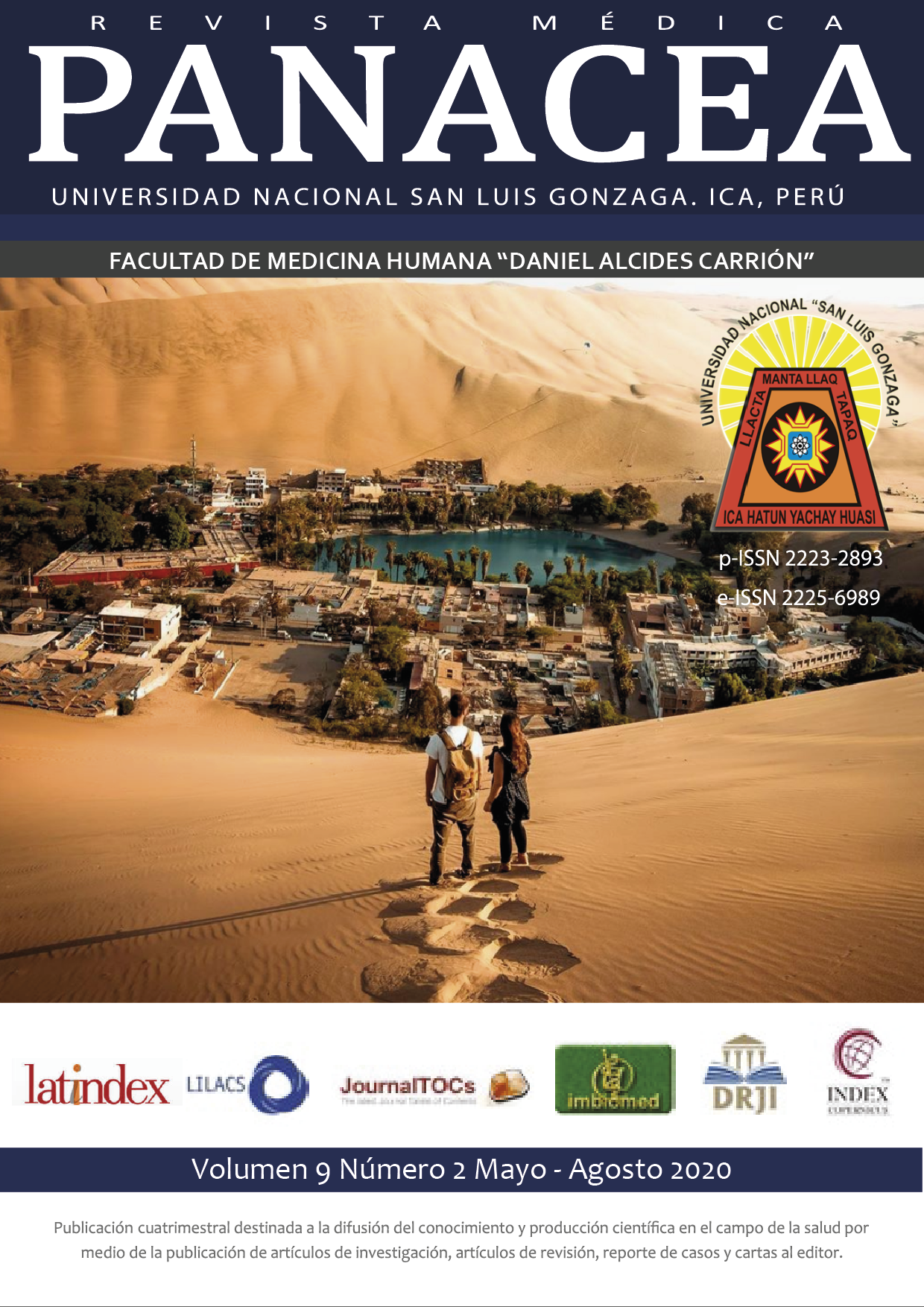PULSATILITY INDEX OF THE UTERINE ARTERY BETWEEN 11 AND 14 WEEKS OF GESTATION, AS A PREDICATOR OF PREECLAMPSIA
DOI:
https://doi.org/10.35563/rmp.v9i2.332Keywords:
Preeclampsia, Efecto Doppler, GestaciónAbstract
Introduction: The pulsatility index of the uterine artery can be used to estimate the risk of preeclampsia. In the second and third trimesters of pregnancy. Objective: To generate knowledge about the pulsatility index of the uterine arteries in the prediction of preeclampsia in pregnant women between 11 and 14 weeks. Materials and methods: It is a descriptive study of literature search and has been carried out in Pubmed, Medline, Scielo, libraries of national and international universities. Results: The average pulsatility index in pregnant women with pre-eclampsia was varied ranging from 1.92 to 2.41, having as cut-off points of IP> 1.71 (p <0.05), in the color doppler of the uterine artery at 11- 14 weeks gestation. The association of pre-eclampsia according to the pulsatility index of the uterine artery between 11 and 14 weeks, is a good method for screening women at risk of developing preeclampsia, since it has a varied sensitivity, specificity, PPV and NPV, but enough to accept it as a predictive method of pre-eclampsia. Conclusions: There is sufficient evidence to conclude that the use of the pulsatility index by Doppler ultrasound of the uterine artery is a suitable method for detection at 11 to 14 weeks gestation in women to develop pre-eclampsia.
Downloads
Published
Issue
Section
License
Copyright (c) 2020 LESLIE MARTÍNEZ-CABRERA, JORGE YBASETA-MEDINA

This work is licensed under a Creative Commons Attribution 4.0 International License.
Copyright is retained by the authors, who have the right to share, copy, distribute, perform, and publicly communicate their article, or parts of it, provided that the original publication in the journal is acknowledged.
Authors may archive in the repository of their institution:
- The thesis from which the published article derives.
- The pre-print version: version prior to peer review.
- The post-print version: final version after peer review.
- The final version or final version created by the editor for publication.


